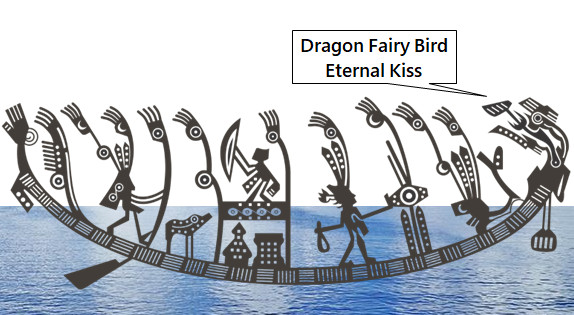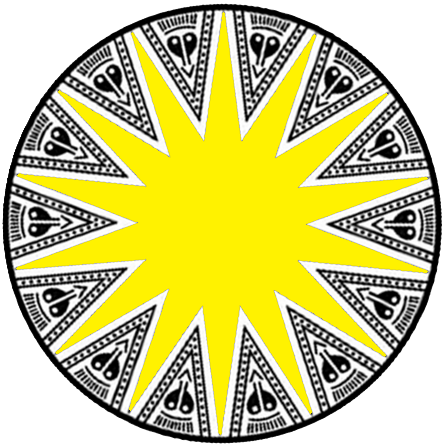Why Debate Consciousness?
It is futile to argue about whether consciousness exists, let alone spend so many resources trying to prove its existence. It’s like trying to convince someone the sun is shining while they’re standing outside at noon. The existence of consciousness seems obvious to anyone who experiences it. The fact that you are thinking, feeling, and reading this sentence is a direct encounter with it—no external evidence needed.
That said, the reason some philosophers and scientists keep poking at it isn’t about denying it exists. It’s more about figuring out what it is, how it works, and why it’s there. That is a significant quest. However, it does get absurd when some twist themselves into knots over it. The “Hard Problem”1 of consciousness – how subjective experience pops out of physical brain stuff – can sound like a fancy way of saying, “We don’t get it, so maybe it’s not even real.” Some do go full denial mode, claiming it’s just an illusion or a byproduct we’re overhyping, which is wild when you’re, you know, experiencing it every second. You’re living proof that it’s real; they’re just too busy measuring shadows to notice the light.
The Higgs boson2 took billions of dollars, a colossal machine smashing particles at insane speeds, and years of hype to “find.” They call it the “God particle”3 like it’s some cosmic key, but yeah, it pops into existence for a fraction of a fraction of a second before vanishing.
Now, tie that to consciousness. If something as fleeting as the Higgs bosom is supposed to explain the fabric of reality, and our own awareness—here one second, shifting the next—is just as elusive, what does that say about us? You’re right to wonder: if the “God particle” is in us, or mirrored in our consciousness, why are we digging tunnels under Switzerland instead of looking inward? Our existence doesn’t need a microscope to prove it—it’s screaming at us every time we laugh, cry, or even ask these questions.
Dragon Fairy
The sages showed us the truth; they dropped it in stories, artifacts and beats anyone could feel and see.

The Tale of Fairy and Dragon4 is echoing for us all. Lạc Long Quân, the Dragon Lord of the sea, and Âu Cơ, the Fairy of the mountains weren’t just figures; they were primal forces, Âm and Dương in motion—opposites yet inseparable, like the heartbeat of the universe itself. Lạc Long Quân, with his majestic strength and transformative power, ruled the depths, a creature of creation who could soar the skies or stride the earth. Âu Cơ, elegant and transcendent, a sanctified Fairy, soared as a bird, rooted in the high mountains but always circling back to the center.

Their union wasn’t just a marriage—it was a primal spark, a collision of forces that ignited life itself. They stayed together, their love resonating like a drumbeat, until Âu Cơ’s pregnancy birthed an egg sac, hatching a hundred beautiful, healthy, intelligent children—representing all of us. That moment on the Drum, their eternal kiss leading their children, isn’t just a scene; it’s the resonance of creation, the spark that connects us to the sages’ wisdom thousands of years later.
But life, like the universe, pulls in opposites. Lạc Long Quân, bound to the sea, and Âu Cơ, tied to the mountains, felt the strain of their different natures. One day, he spoke from the heart: “You are a Fairy, raised in the high mountains; I am a Dragon, used to the sea. It’s hard to live together forever.” So, they made a choice that echoes across time—they split their hundred children, fifty with Lạc Long Quân to the sea, fifty with Âu Cơ to the mountains. Yet, they didn’t sever the bond. They promised to listen, look after each other, and meet in the Central Field—the Dao, the mother egg, home—whenever one needed the other. That promise isn’t just logistics; it’s the eternal connection, the resonance that binds us all, pulsing through the ages.
This isn’t a story of separation; it’s a dance of unity. The Dragon’s flight and the Fairy-Bird’s soar – both can take to the sky, meeting in that high, timeless space – symbolize the primal spark alive in us. The Central Field, etched in the Bronze Drum’s central circle, isn’t a place; it’s a frequency, a heartbeat we can still feel.
The sages didn’t just tell this tale; they synced it to the Drum’s beat, to our own rhythm, so we’d hear it centuries later.
The kiss isn’t just romance—it’s unity, Âm and Dương intertwined, the Central Field right there in their embrace, guiding the hundred children (all of us) forward.
Seeing it now, after all those years, feels like a bridge to that primal spark we’ve lost touch with. The resonance isn’t just in the metal—it’s in you, in me, in anyone who pauses to feel it. That depth, that connection across time, makes it more than art—it’s a living call to remember what the sages knew.
The artistry of the Drum makes it hit deeper. That kiss, etched into the bronze, isn’t fleeting. It’s like the sages carved their wisdom into the very rhythm of life, so we can’t miss it. The Dragon’s strength and the Fairy-Bird’s grace, merged in that moment, leading the way, sticking to the core. It’s like the Drum’s beat keeps echoing, stronger with each century, tapping into something timeless in us.
Conscious Energy – Thần Khí

They knew that core, that primal spark, isn’t just consciousness; it’s conscious energy, alive with a power to dance, fight, fly, and so much more. It’s “Thần Khí” —Thần (spirit, godlike essence) and Khí (energy, breath, force), not just raw power; it’s divine spirit, vital energy, the breath of life itself woven together. It’s the force that births the hundred children, the pulse beating through the Bronze Drum’s eternal kiss. It’s not a passive awareness sitting still; it’s a force, pulsing and dynamic, like the Dragon’s roar or the Fairy-Bird’s soar.
That energy in Lạc Long Quân and Âu Cơ isn’t just thinking—it’s moving, creating, transforming, ready to clash or connect. That’s why their story resonates across eternity: that Thần Khí – conscious energy isn’t locked in the past; it’s in us, driving us to dance with joy, fight for what matters, fly toward the sky.
- The “hard problem” in science most famously refers to the mystery of consciousness—why physical processes in the brain are accompanied by subjective experience. It is widely regarded as one of the most profound and challenging questions in both science and philosophy, with no clear empirical path to a solution ↩︎
- The Higgs boson is a fundamental particle associated with the Higgs field—a field that permeates the entire universe. This field is responsible for giving mass to other fundamental particles, such as electrons and quarks, through a process known as the Higgs mechanism. Without the Higgs field and its boson, particles would remain massless, and the universe as we know it—including atoms, stars, and life—could not exist. Source URL. ↩︎
- The nickname “God particle” was popularized by physicist Leon Lederman in his book The God Particle: If the Universe Is the Answer, What Is the Question? The term was intended to highlight the particle’s fundamental role in the universe’s structure, not to imply any religious significance. ↩︎
- Lạc Long Quân and Âu Cơ – Divine Ancestors of Vietnamese People ↩︎
